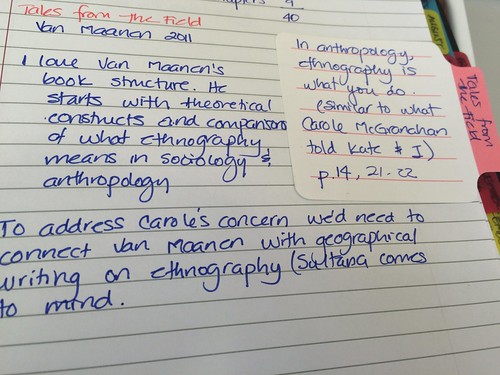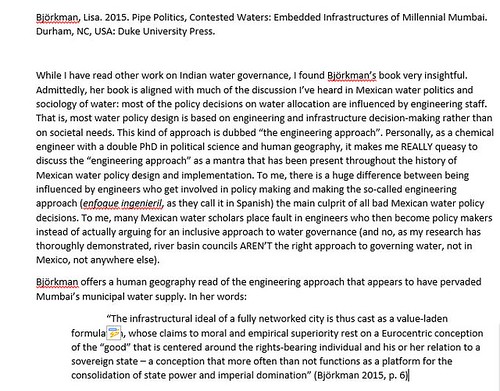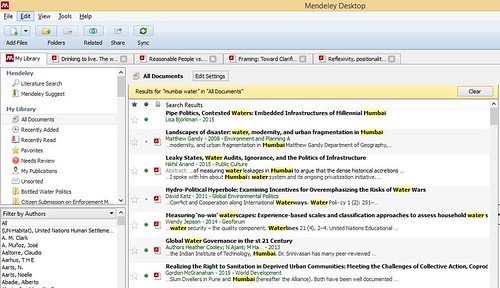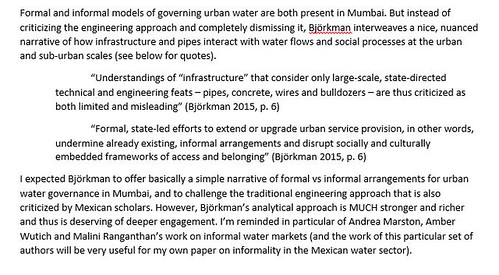One of the challenges I face when teaching my students how to write effective memos (memoranda, memorandums) is that I have developed my own method of memo-writing after reading dozens of books, book chapters, articles, and implementing some of those ideas. I’ve written so many memos that I don’t actually know whether to recommend a specific text as a guideline.
There are many benefits to learning how to write effective memos. Memo-writing allows you to really engage with the material (beyond highlighting and taking notes on the margins of your printed copies, or digital ones in PDF). Writing memoranda also allows you to integrate reading into your writing workflow. Stuck in the morning during your alloted writing time? You can read an article and write a memorandum about it = problem solved. You can write memos about your readings, about your fieldwork, about your data (laboratory or field or computer-generated). The key element is that whatever kind of memo you write, it should be useful to you.
For those who think I only do analog stuff: I also do handwritten memos. Writing a memo can also be used as a Quick Win, and the results from the memos can be dumped into the Excel synthetic lit review worksheet.
I recently re-read a chapter of Corbin and Straus’ classic “Basics of Qualitative Research: Techniques and Procedures for Developing Grounded Theory” on memo-writing and diagrams (Chapter 6). Corbin and Strauss’ book is one of my favorites, I read it during my PhD studies) and I have always recommended it because I think that it might be useful for students, particularly those who use qualitative methods. Re-reading the chapter really sparked my interest in writing an example and sharing how I actually do my memo-writing (even though I’m still on holidays!).
Memo-writing #AcWri pic.twitter.com/UXKiN892eG
— Dr Raul Pacheco-Vega (@raulpacheco) July 28, 2016
From the excerpt below you can notice that I start writing my memo with the full citation at the top, as shown in my Mendeley database. Then I usually write a contextual summary that interweaves the book or journal article or book chapter I’m memo-ing with my own research or thoughts about other authors and/or specific citations.
I then start extracting specific quotations I might want to use. One tip that I think should be useful for others is that I extract the quotation in Word EXACTLY as I would need it and insert it in an actual manuscript. That is, I link the actual citation with the Mendeley Cite-As-You-Write plug in, and do a manual edit so I can literally copy and paste. That way, the Mendeley fields will be inserted into the manuscript I’m writing, and I don’t need to manually search my Mendeley database when I write the paper.
I usually interweave quotations with text related to other authors, as though I were writing an actual manuscript. Doing this for a memo means that I can extract full paragraphs of several memoranda and assemble the literature review. I also use this technique to extract quotations that I can then dump into my Excel literature review synthesis.
Something else I do when I write a memo is that I search my Mendeley database for a specific phrase or word, or author, to see who else should I be linking to within a specific memorandum. For example, I always thought the work of Lisa Björkman could be linked to that of Malini Ranganathan, Georgina Drew, Colin McFarlane, Matthew Gandy. When I search my Mendeley database, I find several of these authors already mentioned. So, I can then draw a conceptual map of authors that links their work and I now know who else is writing about urban water infrastructure, informality and governance in Mumbai, India.
Shown in the extract below, I have written notes to myself in this memo about specific authors that I think should be engaged when writing about the work of Lisa Björkman, and how this links to my own work on informal water markets in Mexico. Since most of the time I am writing memos from memory, it is actually very useful to have my Excel dump worksheet open, as well as my Mendeley database. That way I can copy and paste quotations directly without having to worry about repeating the procedure once I have finished writing the memorandum.
I’m quite honest in the notes I write in my memoranda, so I am often wary of sharing an actual memo of mine, but I thought that even though this memo is in progress, it might be useful for other academics (and even my own students) to see how I try to write effective memorandums. I strongly recommend this technique to engage the material in greater depth. You can then upload the Word memorandum into Evernote and tag it with specific keywords, or just simply keep it stored in your Dropbox.
Hopefully sharing my memo-writing method will be useful for students, practitioners and fellow professors/instructors/educators/academic writers!





Excellent article. Well worth reading.
Very helpful.